Smart lighting stands for the detection of distributed wireless remote, remote control and remote telecommunication control system that consist of computers, wireless communication data transfer, spread wide-spectrum power line communication technologies, computer smart information processing and energy conservation electronic control and other technologies. The purpose is to achieve smart control of lighting equipment.
It contains the functions of intensity adjustment of lighting brightness, the soft start of lighting, timing control and scene setting to achieve the features of safety, energy-saving, comfort and high efficiency. It is designed to meet the purpose of energy saving, and automatically turns on the lighting or adjusts the brightness in the event of changes in environmental conditions. The most common types embrace “sound control lighting” and “light control lighting”.
1. What is Smart Lighting in IoT?
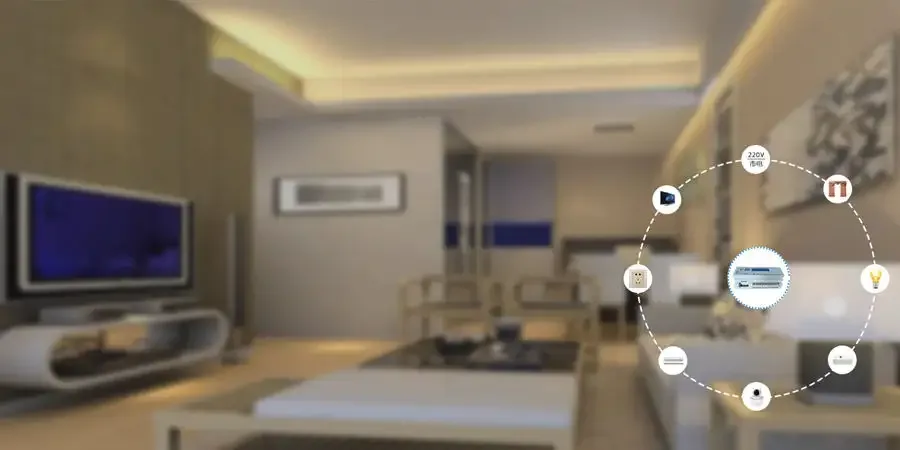
Intelligent lighting stands for the use of distributed lighting control systems that are composed of Internet of Things technology, wired or wireless communication technology, power line carrier communication technology, embedded computer smart information processing, as well as energy-conservation control technology to realize smart control of lighting devices.
Different from traditional lighting, smart lighting is able to realize the aim of security, energy saving, comfort and high efficiencies. Thus, smart lighting has a huge growth prospect in the industry of a home, an office, businesses and a public facility. China’s intelligent lighting market is yet to be well-developed and intelligent lighting applications are also mainly concentrated in the field of business and public facilities, hotels, exhibition venues and municipal engineering projects. In addition, smart lighting is mainly applied in road traffic; Also, office buildings and high-end villa projects have also adopted intelligent lighting. With the development of R&D and production of intelligent lighting technology and product promotion efforts, the intelligent lighting that is applied in the home area is expected to be popularized.
2. What is the definition of Smart Light?

The smart light is different from a traditional lamp, but a part of intelligent devices. Apart from the smart light body, there is a smart control device held with hands. Smart lighting control devices are equipped with computing power and network connectivity. With the help of the applications, its function can be constantly extended. The key functions of intelligent lights are light control, lighting effects, lighting creation, sharing and light and music interaction. Also, smart lighting can make people become healthy and joyful.
3. How does smart lighting Work?
Smart Remote Control
Smart remote control items are primarily divided into remotely controlled LCD switch series and remote control kinds. Different from the traditional lighting, it can manage the LCD display, touch screen dimmer, one-key scene, one-to-one remote control and partition lighting all-on and all-off;
Wireless Remote Control
Wireless remote control items are able to realize wireless remote control, timing control with the remote control distance greater than 50 meters, which can across the wall and floor. The touch screen can be normally used 300,000 times or more.
Scene Control
You can just use a fingertip to click on the remote control, which allows you to sit on a sofa to direct all the lights at home and change the brightness on your own choice. You can shift different scenes like meeting, dining, audio-visual, leisure and entertainment at will, which is similar to the intelligent space of Zhengyu intelligent light combinations that contain up to 63 kinds of light effects.
Smart Sensing
With the help of sensing devices, intelligent sensor lights are able to achieve the effect of “people, cars to light, people, cars to light off”. You can achieve intelligent control of lamps and lanterns without any manual operation, which is applicable for corridors, buildings, basements, garages, warehouses and other automatic lighting places.
4. Types of Smart Lighting
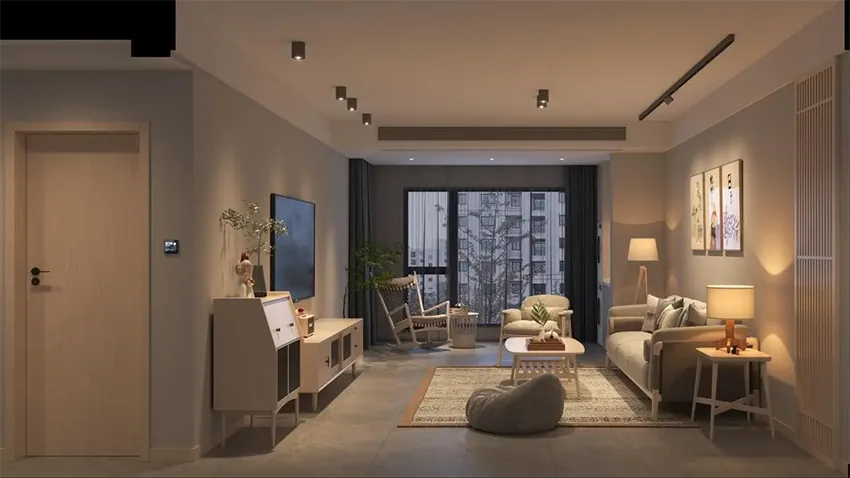
The smart lighting control system contains lots of traits. For instance, it can shift different types of lights with different scenes. Even the light fade in and out can be well switched, while it can access a variety of sensors for automatic control of the lighting. What’s more, it contains the function of time control, which means that it can adjust the brightness of light according to a different time. What’s more, it possesses an infrared remote control function. That is, we can hold the infrared remote controller to direct the lights. Meanwhile, it also achieves control of the lights through sound, light, heat, a person and animal moving detection.
(1) Remote Control Lighting
Remote control lighting remains an effortless and handy way to dominate lighting equipment using a radio signal. With the rapid growth of technologies, digital wireless remote control technology has been the replacement of traditional mechanical manual switches, and it has progressively become popular among people nowadays.
(2) Sensing Lighting
Human body induction is also named infrared induction. The human body remains at a continuous body temperature, which is typically around thirty-seven degrees. Therefore, it will emit a specific wavelength of infrared light, which is captured by the human body induction lighting to control the lighting brightness.
(3) Touch Lighting
Touch control equipment often contains built-in a touch sensor chip. The mainstream technologies of touch sensor panels nowadays contain the capacity induction technologies, which take control of switches and lamps through capacitance changes brought about by finger touch.
5. What are the advantages of Smart Lighting?
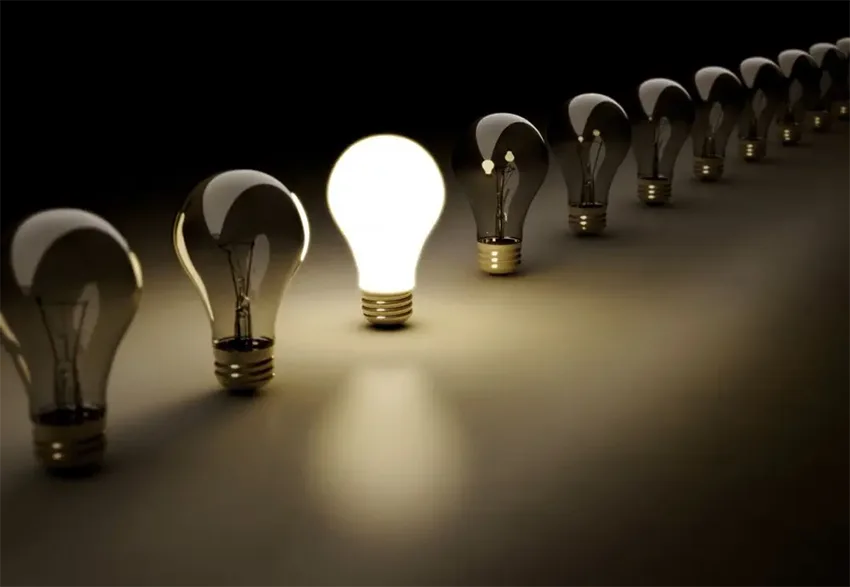
Energy conservation and emission reduction
The intelligent lighting control system, by the mean of a variety of different “presetting” control methods and control components, has different times and different environments of the light level for precise settings and reasonable management to achieve energy savings. This way of automatic adjustment of illumination can make full use of outdoor natural light to turn on the lights on-demand or turn on lights to the desired brightness. Using the least amount of energy to ensure the required level of illumination, energy savings can generally reach more than 30%.
Extension of Serve Life of Lighting
Whether it is the thermal radiated light sources or the gas discharge lighting sources, the change of the grid voltages is a major result of destruction to the light sources. Suppressing the fluctuation of grid voltage can effectively prolong the functional life of the light source. The smart lighting control system can be applied in lighting as well as hybrid circuits, which is highly adaptable and can also work constantly and steadily in different harsh grid scenes and complicated load situations. At the same time, it will also effectively prolong the service life of lamps and lower maintenance costs.
Environment Improvement and Efficiency Enhancement
A reasonable choice of light sources, lamps and lanterns and an excellent lighting control system can help enhance the quality of lighting. The smart lighting control systems replace the dimmer module control panels instead with the traditional flat switching control lamps, which can efficiently control the illumination amount of the area, thus enhancing the illumination unification.
Multiple Lighting Effects
A lot of light control ways can decorate the same buildings with a lot of artistic effects, adding colors to the buildings. In modern buildings, lighting is not simply to satisfy the demands of people’s visual effects of light and dark but needs to offer a lot of control plans to make the building more vivid and more artistic. Also, it should give people a rich visual effect and a sense of beauty.
6. What components does smart lighting consist of?
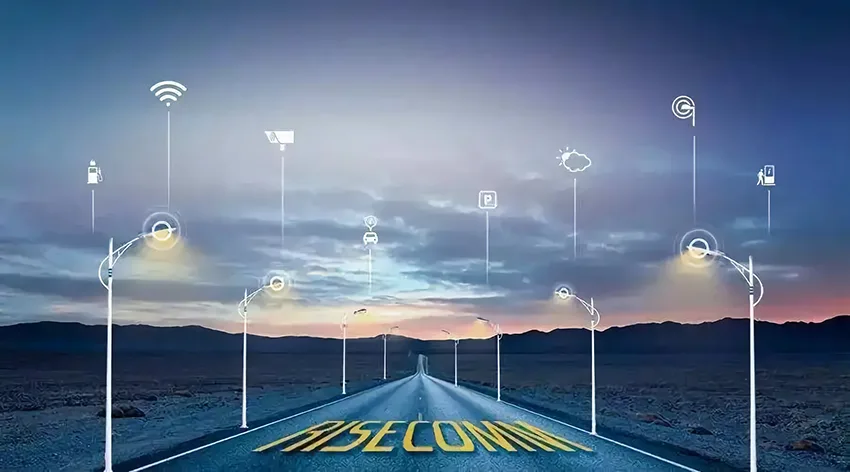
The so-called intelligent lighting control system actually controls the lighting according to the function of a certain area, different times of the day, outdoor light brightness or the use of the area. One of the most vital points is the possibility of presetting, i.e. having the function of transforming the lighting brightness into a series of settings. These settings, also viewed as environments, can be called up automatically by a dimming system or a central construction control system. For the utilization within the home, this can take the form of an integral central controller, possibly with the touch screen interfaces. As a matter of fact, such a system replaces an entire building management system (BMS), which is applied in commercial settings.
Intelligent lighting systems are a fundamental part of the entire smart home and are particularly fitting for large housing areas, where they will make life easy and comfortable. Lighting control systems are classified as stand-alone, room-specific or large networked systems in which dimming equipment is installed in an electrical cabinet and operated by a network of external equipment, including a sensor and a control panel. The strength of a networked system is that distinctive places of the room can be directed from a lot of points. Inside a home, the control panels can be installed on walls which is close to the main inlets, working as the major directing points for several outdoor places.
Network switches and wireless remote control systems are key parts of the intelligent lighting system. There are two series of network switches, T-type and R-type; wireless remote control system consists of two types of products, which are remote controllers and receivers. They are intelligent products since they are equipped with built-in computer chips and software with complex functions; At the same time, they are alike products as their appearance is alike to ordinary switches, and the installation method and basic operation are also similar to ordinary switches. being a revolutionary switch. network switches have powerful home networking control functions but it doesn’t have complicated control cables, and also their wiring, installation and use are simpler than traditional switch. Switches, appliances, and remote controls are all nodes in the network, and this network is either something else or the home 220V wire, which is a ready-made network.
Power lines transmit electricity to every room in your home, and at the same time connect all the lights and appliances in your home into a network. The RL-X10 is a “language” that allows all appliances, lights and sensors to talk, communicate and control each other using power lines as a carrier to transmit control signals. It can be utilized to up to 256 differed addresses. If multiple devices are required to respond to a signal, they can simply be set to the same address. Based on the international standard X-10 power carrier communication protocol, some designs have been added to optimize the original X-10 protocol and then develop a networked intelligent home control system that is compatible with all manufacturers’ products under the X-10 protocol, which is the RL-X10 power carrier networked intelligent home control. It can control the whole network at any point, and the whole network can control any points. What’s more, it can control the lights and appliances of the whole family at two locations, and it can also direct a certain light and appliance at any location of the whole family. With only one remote controller, you can remotely control all the lights and appliances in your home in all directions. The network switch allows you to define each of its keys at will, and you can switch all the lights, a group of lights, a light or an appliance with one key. For instance, if the key controls a certain light, you can now let it control a certain curtain, or you can let it control both lights and curtains. Even if the home has been renovated, the network switch has a beautiful appearance, built-in computer chip and software, with a variety of remote control, which can directly replace the ordinary switch. An ordinary family can buy it for 2000 RMB. A Smart home starts from the switch, and the network switch will improve people’s life. It is the excellent combination of high-level technologies and home.
7. What are the IoT technologies being used in Smart Lighting System?
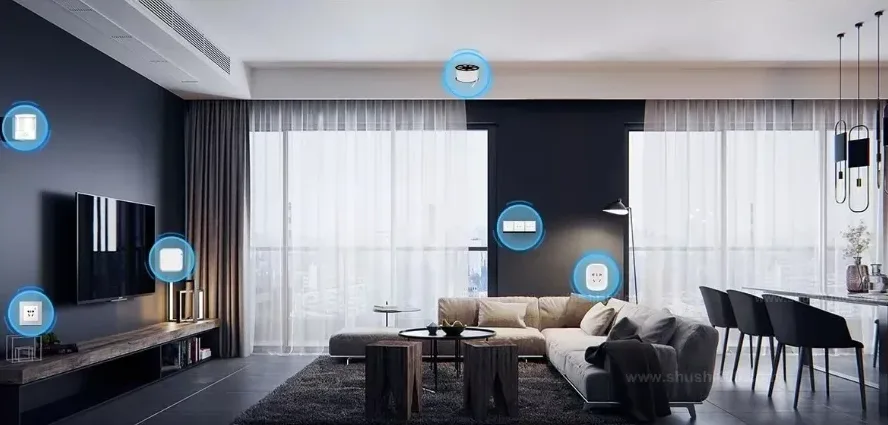
The smart lighting platform layer includes the management, control, rule engine, big data analysis and operation support of the entire smart lights. This layer focuses on the human-machine interface, external communication API, system control and other functions of the whole system. The application layer of smart lighting contains energy efficiency management, computer interface, manual device management, etc.
The smart lighting LED intelligent system solution can not only decrease the maintenance frequency but also improve the maintenance work and the safety of relevant personnel. The added IoT technology is used in the intelligent control of lighting, which is connected to the mobile cellular network through wireless communication to achieve comprehensive monitoring, intelligent control and precise management of the port lighting mono-light so as to achieve on-demand lighting, energy saving and emission reduction.
8. Smart Lighting Applications
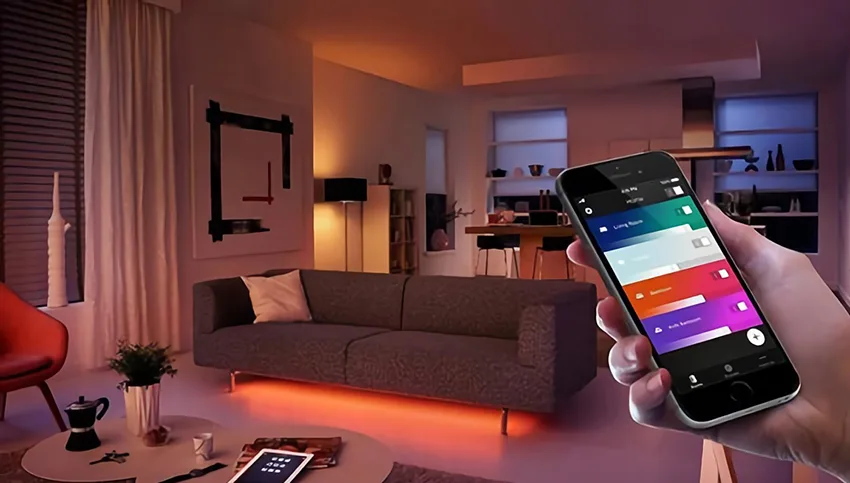
(1) The automatic control of lighting
The most distinctive trait of the smart lighting system is scene control. In the same place, we can set up several lighting circuits. The adjustment of each circuit’s brightness can achieve a certain lighting mood, which is called scenes; Different scenes (to create a different lighting environment) can be set up in advance to switch the scene when the fade in and out time so that the light can achieve soft changes. Clock control can be achieved through the use of clock controllers so that the lights are presented according to the daily sunrise and sunset or a regular change of time. Different kinds of sensors and remote controllers can be applied to realize automatic direction of the lighting.
(2) Beatify Environment
Indoor lighting utilizes environment changes to enhance the artistic effects to generate a sense of three-dimensional effect and hierarchy and create a cozy environment, which is favourable to the people’s physical and mental health and improves work productivity.
(3) The extension of service life of lamps
The main elements impacting the service life of the lamps are primarily over-voltage utilization and the cold shock, which significantly decrease the life of the lamps.
(4) Energy-Saving
The brightness sensors are able to automatically change the lights to realize the energy-conservation effects. When people enter the sensing areas of sensors, that area will be gradually lighted up. Then when they come out of the sensing areas, the lights will be gradually darkened or extinguished so the “long lighting” in some corridors and hallways can be directed to realize the purpose of energy conservation.
(5) The consistency of lighting and brightness
Using an illumination sensor, you can achieve constant light in the room. For instance, in the campus classroom, the requirements of keeping the same light intensity near the window and the wall can be satisfied if sensors are installed near the windows and the walls respectively. When there is a powerful outdoor lighting, the system will automatically weaken or turn off the lights near the window and change the brightness of the lights using the wall sensors; While the outdoor light becomes weaker, the sensors will change the brightness of the lights to the presetting lighting level values based on the induction signal.
(6) Comprehensive Control
The entire system can be monitored through the computer network, such as learning about the current working state of every lighting circuit to conduct settings and modify environments. Thus, the whole system can be controlled and fault reports issued when there is an emergency.
9. Smart Lighting Solutions
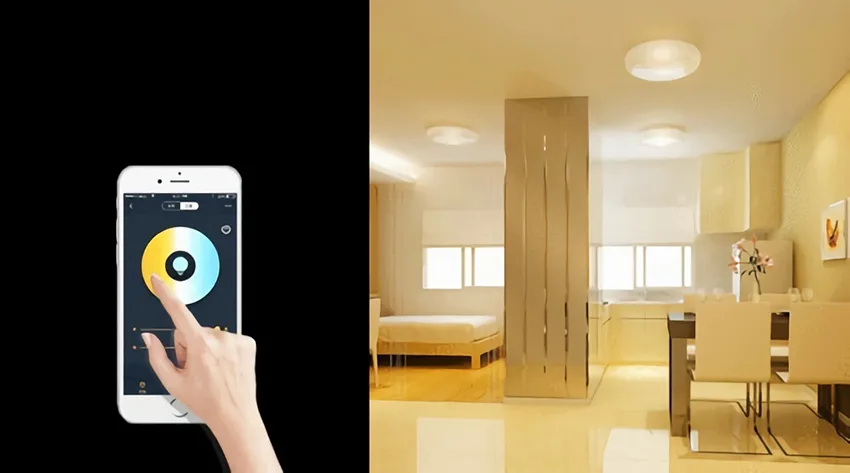
Flexible Control
According to the needs of application scenarios, the lights can be controlled independently to turn on or turn off, or achieves group control so as to realize unified management of the same area;
Scene Mode
The system contains a variety of control modes. According to the needs of different occasions, such as the application of smart home, you can achieve the settings of the meeting, audio and video, going out, sleep and other modes.
Time delay control
Customized settings can be used to set the lighting delay or timing control function, that is, to set the time or a fixed cycle as a cycle point that can automatically start and stop. The cycle time points can be the week, day, hour, minute and other time nodes.
Linkage Control
The system can support manual buttons, door magnetic sensors and other control terminals to link the control of lights so as to achieve the status of linkage instructions.
Smart Light Adjustment
Intelligent control of a variety of lighting equipment, including the dimming effect of LED power or light bands and other equipment, can achieve the lighting color change, light and dark effects so as to achieve intelligent control of lighting effects in the stages or celebrations and other occasions.
10. Some Well-known Smart lighting Company around the globe
- Premium Pick: Philips Hue 75W Starter Kit
- Editors Choice: Wyze Intelligent Bulbs
- Govee Intelligent Lighting
- Best Value: TP-Link Kasa Intelligent Lighting
- Nanoleaf Shapes
- Sengled Smart Bulb
- Meross Smart Lighting
- LIFX Smart Lighting
















